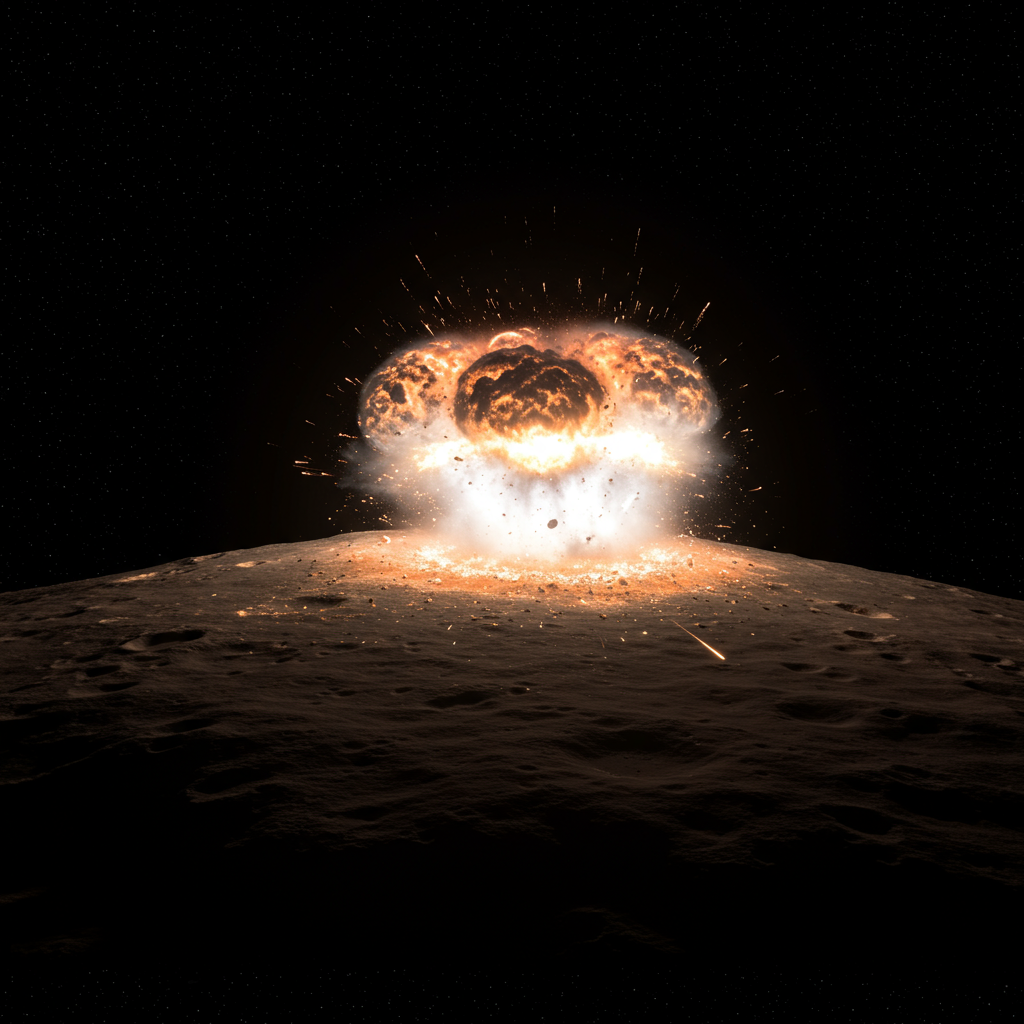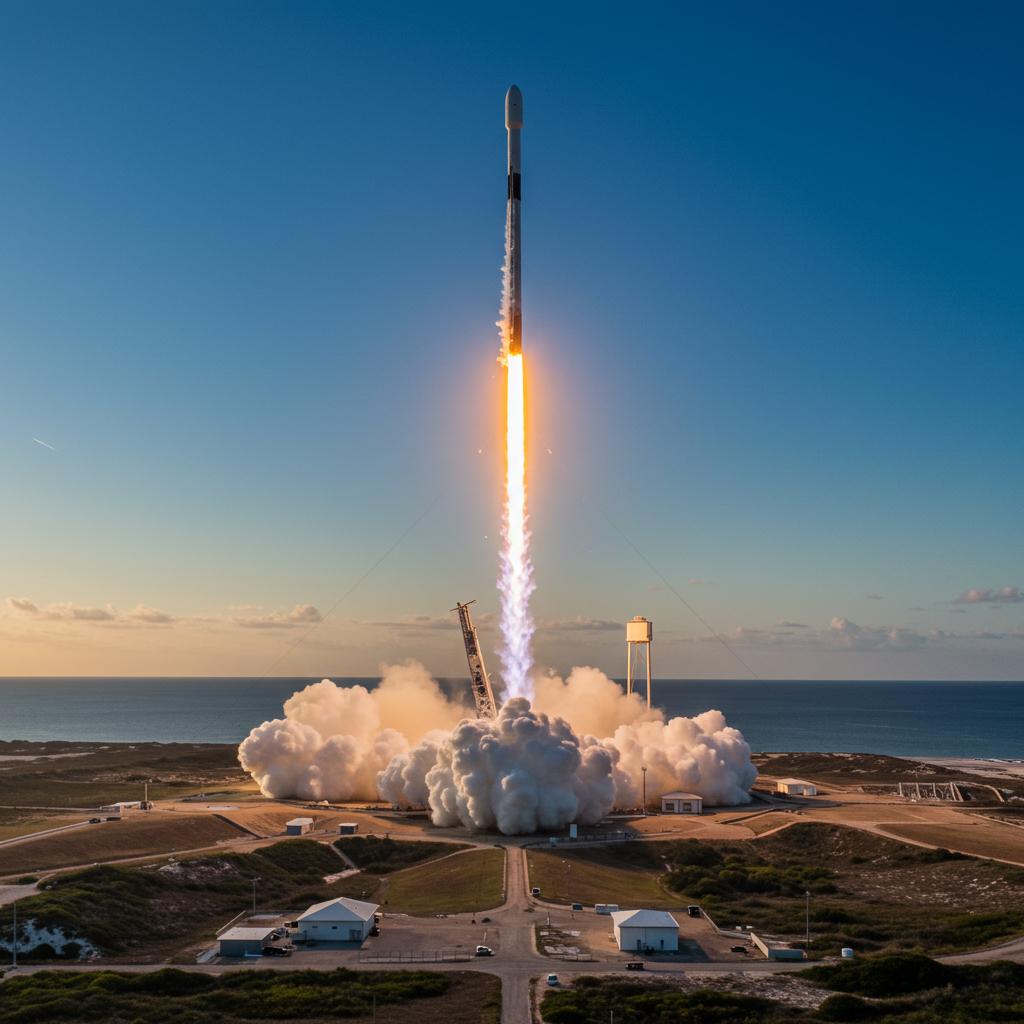A breathtaking celestial event unfolded recently, capturing the world’s attention as a powerful impact illuminated the lunar surface. On a late October night, a significant space rock slammed into the Moon, triggering an explosion so bright it was clearly visible from Earth. This dramatic incident not only offered a rare spectacle for stargazers but also underscored the constant cosmic forces shaping our closest celestial neighbor, carrying crucial implications for humanity’s burgeoning lunar ambitions.
A Fiery Flash: Amateur Astronomer Captures Historic Lunar Impact
The night of October 30, 2025, became a landmark date for lunar observation. At precisely 20:33:13.4 Japan Standard Time, amateur astronomer Daichi Fujii, also a curator at the Hiratsuka City Museum, recorded a brilliant flash erupting from the Moon’s night side. His high-speed video capture, filmed at an impressive 270 frames per second and played back at 0.03x speed, offered an unprecedented glimpse into the very moment a new crater was carved into the lunar landscape. The intense, brief flash reached a brightness of 8th magnitude, lasting a mere 0.1 seconds, yet left an indelible mark visible to observers worldwide.
Adding to the intrigue, Fujii documented a second such impact just two nights later, on November 1, 2025, at 20:49:19.4. These remarkable observations provide invaluable real-time data on the dynamic processes continually at play on the Moon.
The Science Behind the Spectacle: Why the Moon Explodes
Unlike Earth, which boasts a protective atmosphere, the Moon is exposed directly to the harshness of space. Our atmosphere acts as a natural shield, causing incoming meteoroids to burn up from friction, creating the familiar streaks we call “shooting stars.” This prevents most space rocks from ever reaching the surface.
On the Moon, however, there’s no such buffer. When a meteoroid barrels towards the lunar surface, it strikes directly, converting its immense kinetic energy into heat and light. This instantaneous release of energy creates a bright flash, often accompanied by the excavation of a fresh crater. Fujii’s video vividly captured this fundamental difference in celestial mechanics.
Tracing the Cosmic Bullet: From Taurid Showers to a New Crater
Scientists have meticulously analyzed the October 30 impact, pinpointing its location east of the well-known Gassendi Crater, specifically at latitude -16 and longitude 324. Based on the event’s timing and trajectory, experts believe the impacting object likely originated from either the Southern or Northern Taurid meteor showers. These annual showers, notorious for their “fireballs,” are active around this time of year, making them prime suspects.
Taurid meteoroids are known to hurtle through space at speeds of approximately 27 kilometers per second, typically striking surfaces at an angle near 35 degrees. Further analysis suggests the space rock responsible for the October 30 impact was relatively small, weighing an estimated 0.2 kilograms. Despite its modest size, the sheer velocity of the impact generated enough force to excavate a new crater approximately three meters in diameter. This powerful event serves as a stark reminder of the Moon’s ongoing bombardment and the constant reshaping of its ancient face.
Protecting Our Lunar Future: Implications for Human Missions
As humanity embarks on an ambitious new era of lunar exploration, with plans for extended human missions and the establishment of permanent lunar bases, understanding the frequency and intensity of meteoroid impacts becomes paramount. These events, while scientifically fascinating, pose a significant and constant threat to both uncrewed spacecraft and future astronauts.
The data gathered from observations like Fujii’s are critical for assessing and mitigating these risks. Engineers and mission planners can use this information to design more robust lunar habitats, protective shielding for spacecraft, and safer protocols for lunar surface activities. Much like Earth’s dedicated planetary defense efforts track Potentially Hazardous Asteroids (PHAs) that might one day threaten our planet, monitoring lunar impacts helps safeguard our burgeoning presence on the Moon. These continuous observations contribute to a growing global catalogue of lunar impact flashes, enhancing our understanding of meteor streams and their effects on the lunar environment.
The Role of NASA’s Lunar Reconnaissance Orbiter (LRO)
The scientific community eagerly awaits high-resolution images from NASA’s Lunar Reconnaissance Orbiter (LRO). The LRO, a powerful robotic spacecraft orbiting the Moon, is capable of capturing detailed views of the lunar surface. Its data will provide crucial insights into the precise dimensions and characteristics of the newly formed crater, as well as any surrounding ejecta patterns. Such images will further refine impact models and deepen our understanding of lunar geological processes. The collaboration between amateur astronomers and professional space agencies is vital in piecing together a comprehensive picture of lunar dynamics.
Frequently Asked Questions
What caused the recent bright flashes observed on the Moon?
The recent bright flashes observed on the Moon, particularly on October 30 and November 1, 2025, were caused by meteoroids impacting the lunar surface. Unlike Earth, the Moon lacks an atmosphere, so incoming space rocks don’t burn up. Instead, they strike directly, releasing immense energy as a bright flash and forming new craters. Experts believe the impacting objects were likely associated with the Taurid meteor showers, which are active around this time of year.
How do scientists monitor and study lunar meteoroid impacts?
Scientists and amateur astronomers monitor lunar meteoroid impacts through dedicated observation programs. For example, Japanese amateur astronomer Daichi Fujii captured the recent flashes using high-speed video equipment. These individual observations contribute to a global catalogue of lunar impact flashes. Spacecraft like NASA’s Lunar Reconnaissance Orbiter (LRO) also play a crucial role by providing high-resolution images of newly formed craters, allowing for detailed analysis of impact mechanics and surface changes.
What risks do meteoroid impacts pose to future Moon missions?
Meteoroid impacts pose significant risks to future Moon missions, including both robotic spacecraft and human endeavors. Even small meteoroids, like the 0.2 kg one that created a 3-meter crater, can damage sensitive equipment, structures, or even endanger astronauts. As plans advance for longer human missions and the establishment of lunar bases, understanding the frequency and intensity of these impacts is critical for designing protective shielding, developing risk mitigation strategies, and ensuring the safety and longevity of lunar exploration efforts.
A Glimpse into the Moon’s Dynamic Heart
The spectacular lunar impact observed from Earth is a potent reminder of the dynamic, ever-changing nature of our celestial neighbor. It highlights the Moon’s constant exposure to space debris and the continuous process of crater formation that has shaped its surface over billions of years. For astronomers, both amateur and professional, these events are not just stunning visual phenomena but invaluable scientific opportunities. As we push further into space, these observations provide critical data, helping us to better understand and prepare for the challenges of living and working on the Moon.




